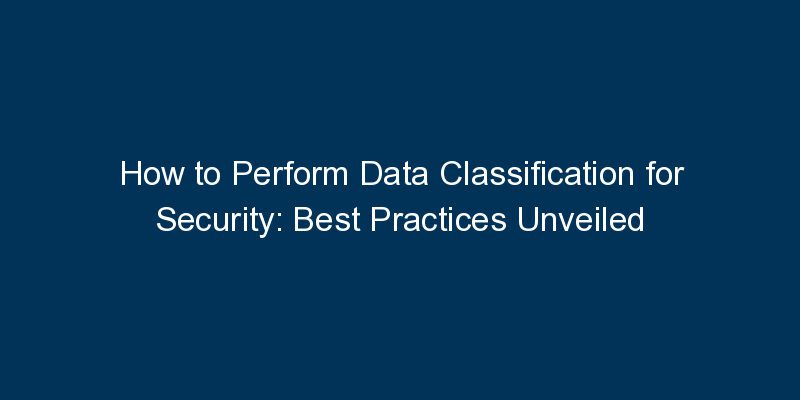Data is a valuable asset for any organization, and safeguarding it is paramount. This blog will delve into the intricacies of data classification for security, offering best practices to ensure sensitive information is adequately protected from potential threats.
Introduction:
Data classification is the process of categorizing data based on its sensitivity and value. Effectively implementing data classification is crucial for establishing a robust security posture and preventing unauthorized access to sensitive information. This guide will walk you through the best practices for performing data classification in a security-conscious manner.
Best Practices for Data Classification for Security:
- Identifying Data Categories: Begin by identifying the different categories of data within your organization. This may include personally identifiable information (PII), financial data, intellectual property, and more.
- Defining Classification Criteria: Establish clear criteria for classifying data, considering factors such as confidentiality, integrity, and availability. Clearly communicate these criteria to all relevant stakeholders.
- Automated Classification Tools: Implement automated tools for data classification to streamline the process and ensure consistency. These tools can identify patterns and apply classifications based on predefined rules.
- User Training and Awareness: Educate employees about the importance of data classification and provide training on how to appropriately handle different types of data. A well-informed workforce is a crucial line of defense against security threats.
- Integration with Security Policies: Align data classification practices with your organization’s overall security policies. This ensures a cohesive and comprehensive approach to data protection.
- Regular Audits and Reviews: Conduct regular audits to verify the accuracy of data classifications and make adjustments as needed. Data classification is an evolving process that should adapt to changes in the organization’s data landscape.
Conclusion:
Data classification is a cornerstone of effective data security. By implementing these best practices, you can fortify your organization against potential security threats and establish a proactive approach to data protection.






















Comments